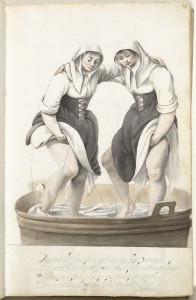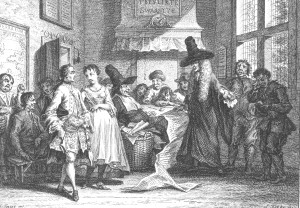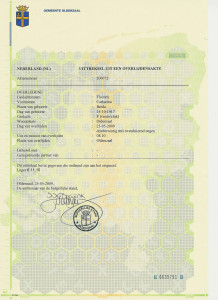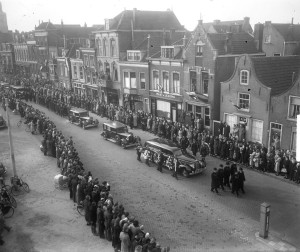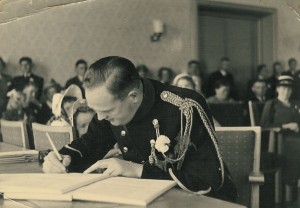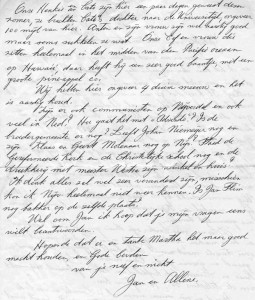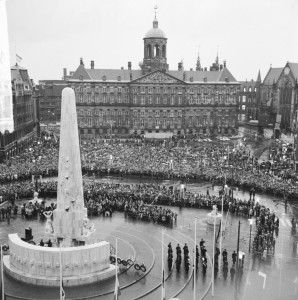A gevangenis is a prison. The modern prison system was introduced in 1811. Many people went to jail, often for petty crimes. Prison records can tell you if any of your ancestors ever went to jail. Read more about prison records. … [Read more...]
Dutch term – Wasvrouw
A wasvrouw was a laundress. It was an occupation for poor women, who were usually single or widowed. … [Read more...]
Dutch term – Meerderjarig
Meerderjarig means 'of age,' having reached the age of majority. What the age of majority was, depends on the time and place. Youngsters could also be declared to be of age by the court, usually with consent of the parents or guardians. Age of majority in the Netherlands Period Age of majority Before 1811 Depends on the region, usually 25. 1811-1838 21 1838-1901 23 1901-1988 21 Since 1988 18 Source Pieter Nieuwland, Friezen Gezocht … [Read more...]
Dutch term – Gewaarmerkte kopie
A gewaarmerkte kopie is a certified copy. When ordering a record, like your own birth record, you may be asked if you want a regular copy or a certified copy. Certified copies will be printed on special paper and will have a seal by the municipality guaranteeing authenticity. For genealogical purposes, a regular photocopy will suffice. In fact, a regular photocopy can be more reliable for genealogical purposes than a certified copy since certified copies are sometimes extracted and retyped … [Read more...]
Source – Baptismal record
Before 1811, baptismal records are the main source for information about an ancestor's birth date. Baptismal records should have been kept since the Trente council of 1545-1563, but for most areas they only survive since the early to mid 1600s. Most children were baptized within days of being born. In some churches, children were baptized the next Sunday. Others baptized them the same day, or may have waited several weeks. Anabaptists and similar religious only baptized adults, so in that … [Read more...]
Dutch term – Begrafenis
A begrafenis is a burial. Before 1811, the church records of burials are often the best source for the burial date. Some registers include the death date as well. After 1811, death records of the civil registration show when a person died, but they do not contain information about the burial. That information can sometimes be found in family announcements in newspapers or in the burial administration of the churches. … [Read more...]
Dutch term – Voogd
A voogd is a guardian. Before 1811, guardians were usually appointed by the Weeskamer (orphan chamber). After 1811, they were appointed by the court. You can find guardianship appointments in the court records. … [Read more...]
Dutch term – Huwelijksbijlagen
The huwelijksbijlagen or huwelijkse bijlagen are the marriage supplements: the documents that a bride and groom had to submit to prove their identity and eligibility to get married. See the article Marriage supplements: gateway to more information about your ancestors for more information about these records and how to use them for your own research. … [Read more...]
Dutch term – Brief
A brief is a letter. Brieven are a great source of information. Personal letters written by emigrants to their family back home can give you a great idea of what their pioneering life was like. I've also found valuable information in official correspondence, for example in the correspondence of the municipality where my ancestor lived. In municipal correspondence, I've found letters about people who were sent to the pauper colonies or an insane asylum, and appointments of city officials like … [Read more...]
Dutch term – Dodenherdenking
Dodenherdenking means commemoration of the dead. On May 4th, we commemorate all the war victims since the outbreak of World War II. The next day, on May 5th, we celebrate our liberty. The dates are chosen because 5 May 1945 was the day of the German capitulation, which ended World War II in the Netherlands. On Dodenherdenking, the whole country respects a two-minute silence at 8 PM. Commemorations are organized through out the country, where wreaths are laid at war monuments and other places … [Read more...]

